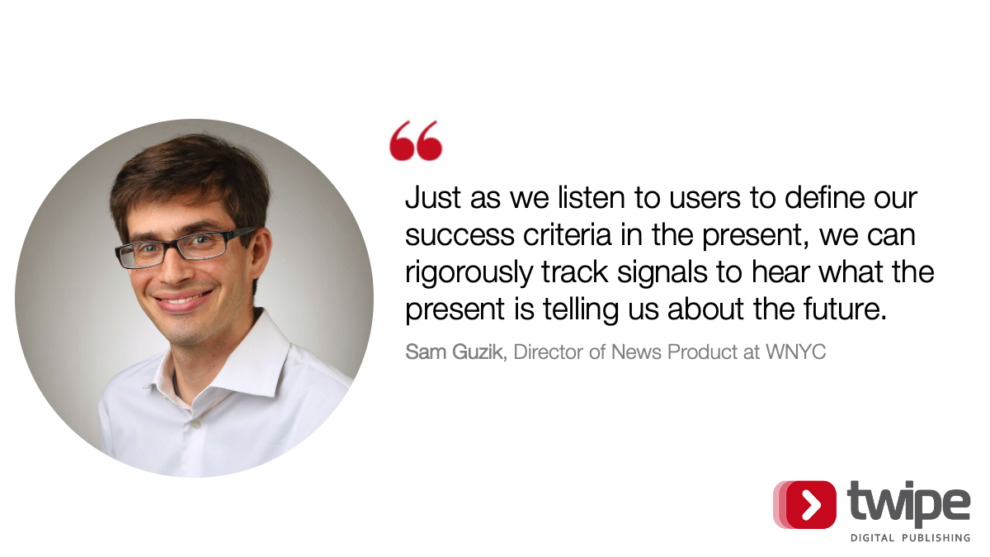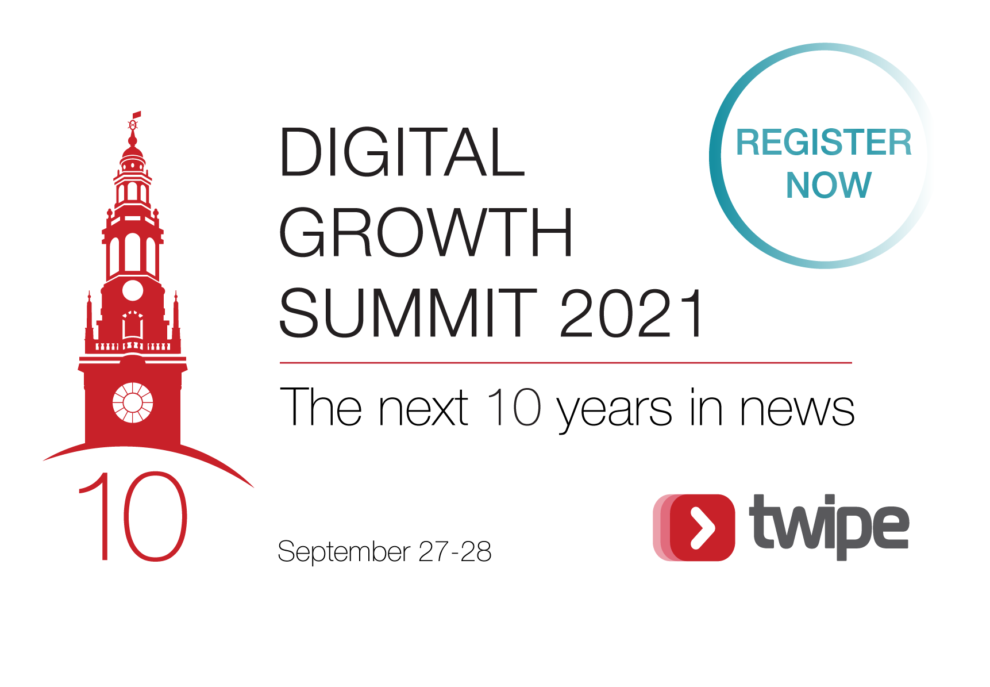Blog
What can we do today to shape the next 10 years in news?

Written by Sam Guzik, Director of News Product for WNYC and a Foresight Affiliate at the Future Today Institute.
Media writing in 2031 will look back and observe that 2021 was a seminal year in the history of media.
As a pandemic rocked the economy, the early 2020s brought relative stability to publishers. The global health crisis brought record-setting levels of attention to news websites. The pivot to subscriptions insulated publishers from the recession, as large numbers of consumers took out their wallets to pay for journalism. Newsrooms in the United States, Europe and across the world grappled with how to engender loyalty in audiences.
But whether we look back on 2021 as the beginning of media’s revitalization or the last gasps of an independent press depends on how we act today.
It is impossible to predict the future, but we can see the emerging forces that our industry will need to contend with:
- New devices will change how consumers get the news — wearables will bring storytelling closer to a user, surfacing information when it is contextually relevant.
- Synthetic media will create opportunities for new forms of experiences for both news and entertainment. Those stories will blur the lines among what is real, fake and manipulated, raising challenging ethical questions and opening new ways for a story to resonate with a user.
- The subscription economy will continue to evolve, as more products convert from an ownership model to paying for access. This might make audiences more willing to pay for news, but it opens journalists to competition from disparate industries.
In the present, we can choose to broaden our thinking and plan for the long-term future of our industry — or focus only on the next milestone on our product roadmaps.
We can track long-term trends and act in pursuit of an exponential vision of the future — or we can focus on our short-term financial performance above any other metric of success.
We can take meaningful, incremental steps to hedge against future sources of disruption — or we can be overtaken by acting as we always have.

What we can do today
News product leaders can infuse their strategy with lessons from strategic foresight.
Just as we listen to users to define our success criteria in the present, we can rigorously track signals to hear what the present is telling us about the future. Monitoring trends lets us identify the sources of risk that could disrupt our operations in the future.
Where design thinking can help jump start the product development lifecycle, scenario writing can add rigor to conversations about the future — and help justify investment in strategic initiatives. Like a great op-ed, the best scenarios are informed by rigorous data and research in the present. That detail lets them be aspirational or fear-inducing and, importantly, action-inspiring.
The easiest — and most essential — tool in the strategic foresight arsenal is also shared with effective product management: Asking incisive strategic questions.
The conversations we can start having now
It’s great to focus on improving conversion rates and boosting individual metrics of engagement, but we need to talk more about the forces outside our control.
That means asking questions like:
- Will consumers be less willing to pay for news if Netflix or Spotify raise their prices?
- What needs to change about news subscriptions in a world with less ownership?
- What does an always-on, contextually-relevant news subscription look like?
The Digital Growth Summit is a great place to start asking questions like these — and more.
Yes, news is essential. But being essential doesn’t guarantee our future.
By asking strategic questions now, we can act incrementally: What partnerships do we need to form now? What kind of talent development or hiring do we need? Where are there opportunities for us to grow?
This kind of thinking needs to permeate all levels of the organization.
It’s essential for effective product management, but it also needs to be part of executive-level strategic plans and operating models.
If we don’t build a future that supports a thriving news ecosystem, we’ll find ourselves in a world built by someone else — with different priorities.
News is too important to just assume we’ll be ok.
Other Blog Posts

Stay on top of the game
Subscribe to Twipe’s weekly newsletter to receive industry insights, case studies, and event invitations.
"(Required)" indicates required fields


